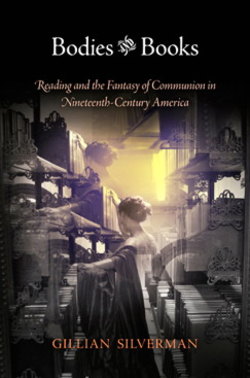Читать книгу Bodies and Books - Gillian Silverman - Страница 10
ОглавлениеChapter 2
Books and the Dead
For books are not absolutely dead things, but do contain a potency of life in them to be as active as that soul was whose progeny they are; nay, they do preserve as in a vial the purest efficacy and extraction of that living intellect that bred them.
—John Milton, Areopagitica
The concept of a book as alive most likely originated with the Bible—“a living and breathing human expression of the thoughts of Jesus Christ”1—although as this chapter will explore, the idea soon came to characterize more secular texts. Lecturing in 1856, the British clergyman F. D. Maurice criticizes those who would understand popular books as “dead things in stiff bindings.” He counters that “there is a living and productive power in them.”2 Echoing this claim, the American author Lydia Maria Child declares about the novel John Brent by Theodore Winthrop: “How all-alive the book is! Glowing and effervescing, like champagne poured out in the sunshine!”3 Child’s comparison of the novel to alcohol is quite different from the drinking metaphors examined in the previous chapter; here, the figure works to represent the book not as a depraving agent, but as a vital force, “glowing and effervescing” as if imbued with life. Although occasionally, the book’s animation manifests itself independently, more often its cause is the haunting presence of the author, whose “soul” is, in Milton’s formulation above, “preserve[d] as in a vial.” According to the Universalist minister Edwin Hubbell Chapin, books are “like wondrous mirrors that have caught and fixed bright images of souls that have passed away.”4 Noah Porter adds that books “recall the history and achievements of the forgotten past. Every volume suggests a living author who thought and toiled in history.”5 Books, then, are the repository of ghosts, belonging (in Friedrich Kittler’s words) to the “realm of the dead,” but reanimated through the act of reading.6
This animate quality of books meant that they were often envisioned as interlocutors, capable of dialoguing with their readers. William J. Gilmore and Matthias Rothe have both demonstrated that, beginning in the eighteenth century, reading was increasingly understood as “recreating an author’s words” and imagining that author as “talking to the reader.”7 According to Rothe, in eighteenth-century western Europe, books were consistently figured as dynamic and conversational, partly in an effort to combat the perception that reading fell short of actual human relations. In this context, books were extolled for their orality (Mündlichkeit)—that is, their ability to mimic the author’s speaking voice.8 Although today we are taught to differentiate among the speaker, the narrator, the focalizer, and the actual author, this was not the convention in the eighteenth and nineteenth centuries. To quote Maurice on this point: “there is a man who writes; and when you get acquainted with that man you get acquainted with the book.”9 Barbara Hochman explains that such an approach to reading made use of “an interpretive convention that involved taking for granted the imaginative unity of author and text.… [S]ince the words of a book were presumed to express the ideas and the character of a particular person, the sense of authorial presence was felt to be a natural and benign pleasure of reading.”10 This is apparent in a letter written by Elizabeth Dwight in 1846 in which she claimed that reading Thomas Arnold (a British educator and historian) “puts you so in mind of him at every sentence.”11 Lydia Maria Child expressed something similar in an 1862 letter in which she stated that in reading the novel John Brent, “a portion of [the author’s] vivacious and beautiful mind has been transmitted to me through the pages of his book.”12
How should we understand this intimate, conversational orientation toward reading? Contemporary critics have argued that such a stance suggests the metaphor of companionship: the book as friend. This notion is confirmed by the titles of several nineteenth-century books and periodicals—Friends in Council, The Friendship of Books, The Friend: A Religious and Literary Journal, The Young Lady’s Friend, The Token of Friendship, The Mother’s Friend, The Friend, or Advocate of Truth, The Sailors’ Magazine and Seaman’s Friend, The Home Friend, The Youth’s Friend, and so forth. The comments of nineteenth-century readers echo this companionate understanding of reading. For Harriet Beecher Stowe, “a book once read was read daily, becoming ever dearer, as an old friend.”13 In a journal entry of 1837, Julia A. Parker describes spending a very pleasant winter “with my books … what very kind friends they are.”14 Lydia Maria Child writes her confidant Sarah Shaw that while she initially took an interest in the author Theodore Winthrop “because he was a dear friend of yours,” after reading his book, “I feel as if he were my friend,—as if I had known and loved him.”15 Given these comments, it is hardly surprising that contemporary critics have characterized the book-as-friend metaphor as the preeminent trope of nineteenth-century reading practices.16 Ronald Zboray has added that while nineteenth-century subjects consistently talked about books in intimate terms, the reality of their existence indicates otherwise: “While the book-as-friend metaphor alluded to flesh-and-blood companionship, it could never represent true human bonding—with all its joys but also its trials, responsibilities, burdens and restraints.… Books as friends were compliant, undemanding, unintrusive, and good for making resolutions, but they were also lifeless and cold unless animated by social intervention.”17
